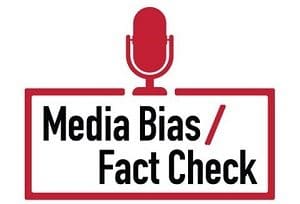RIGHT-CENTER BIAS
These media sources are slight to moderately conservative in bias. They often publish factual information that utilizes loaded words (wording that attempts to influence an audience by appealing to emotion or stereotypes) to favor conservative causes. These sources are generally trustworthy for information but may require further investigation. See all Right-Center sources.
- Overall, we rate the Critical Threats Project as right-center biased based on editorial positions that align with a hawkish worldview. We also rate them as Mostly Factual in reporting rather than high due to the occasional use of poor sources.
Detailed Report
Bias Rating: RIGHT-CENTER
Factual Reporting: MOSTLY FACTUAL
Country: USA
MBFC’s Country Freedom Rating: MOSTLY FREE
Media Type: Organization/Foundation
Traffic/Popularity: Medium Traffic
MBFC Credibility Rating: HIGH CREDIBILITY
History
The Critical Threats Project is an American Enterprise Institute initiative focused on national security threats. It was founded in 2009 and is based in Washington, D.C. The Critical Threats Project (CTP) provides analysis and policy recommendations on security, governance, and militant activity. The website covers various countries and topics, including Iran, Libya, Mali, Somalia, Yemen, Russia, and Ethiopia. It discusses various groups like al Qaeda, AQIM, the Houthi Movement, and the Islamic State.
Read our profile on the United States Media and Government.
Funded by / Ownership
The Critical Threats Project is funded through its parent organization, the American Enterprise Institute. AEI senior fellow Frederick W. Kagan directs Critical Threats. AEI has received funding from various conservative foundations and has been criticized for its ties to the fossil fuel industry. It does not display advertisements and is funded through its parent organization and donations.
Analysis / Bias
The Critical Threats Project provides in-depth analysis and policy recommendations. For example, an article titled “Russian Offensive Campaign Assessment, September 3, 2023” analyzes the ongoing military activities between Russia and Ukraine. It aims to assess the current state of the Russian offensive campaign, focusing on territorial gains and losses, military strategies, and the geopolitical implications of the conflict. The article cites ArcGIS StoryMap to represent the areas of control and conflict zones visually. However, the accuracy of this map is unclear due to a lack of details on its data sources and methodology. The article also cites Understanding War (ISW) as a source whose board includes known hawks like Dr. William Kristol, Joseph I. Lieberman, and General David Petraeus, suggesting a hawkish stance on foreign policy. Although ISW claims to be non-partisan, its board composition indicates a leaning toward assertive U.S. military action.
At the bottom of the article, the Critical Threats Project lists various sources, including factually mixed outlets like The Guardian, Telegram channels, and other social media posts. The credibility of Telegram channels and social media posts may vary, so they should be cross-referenced with other reliable sources for verification.
Another article titled “Iran Update, August 24, 2023” provides an update on Iran’s political, military, and economic activities. It cites sources such as Facebook and Twitter posts, among others. In general, the Critical Threats Project offers comprehensive analysis and policy recommendations on various security and geopolitical issues with a right-leaning bias. However, its sourcing practices could raise questions about its factuality.
Failed Fact Checks
- None in the Last 5 years
Overall, we rate the Critical Threats Project right-center biased based on editorial positions that align with a hawkish worldview. We also rate them as Mostly Factual in reporting rather than high due to the occasional use of poor sources. (M. Huitsing 09/05/2023)
Source: https://www.criticalthreats.org/
Last Updated on September 5, 2023 by Media Bias Fact Check
Do you appreciate our work? Please consider one of the following ways to sustain us.
or
Left vs. Right Bias: How we rate the bias of media sources


